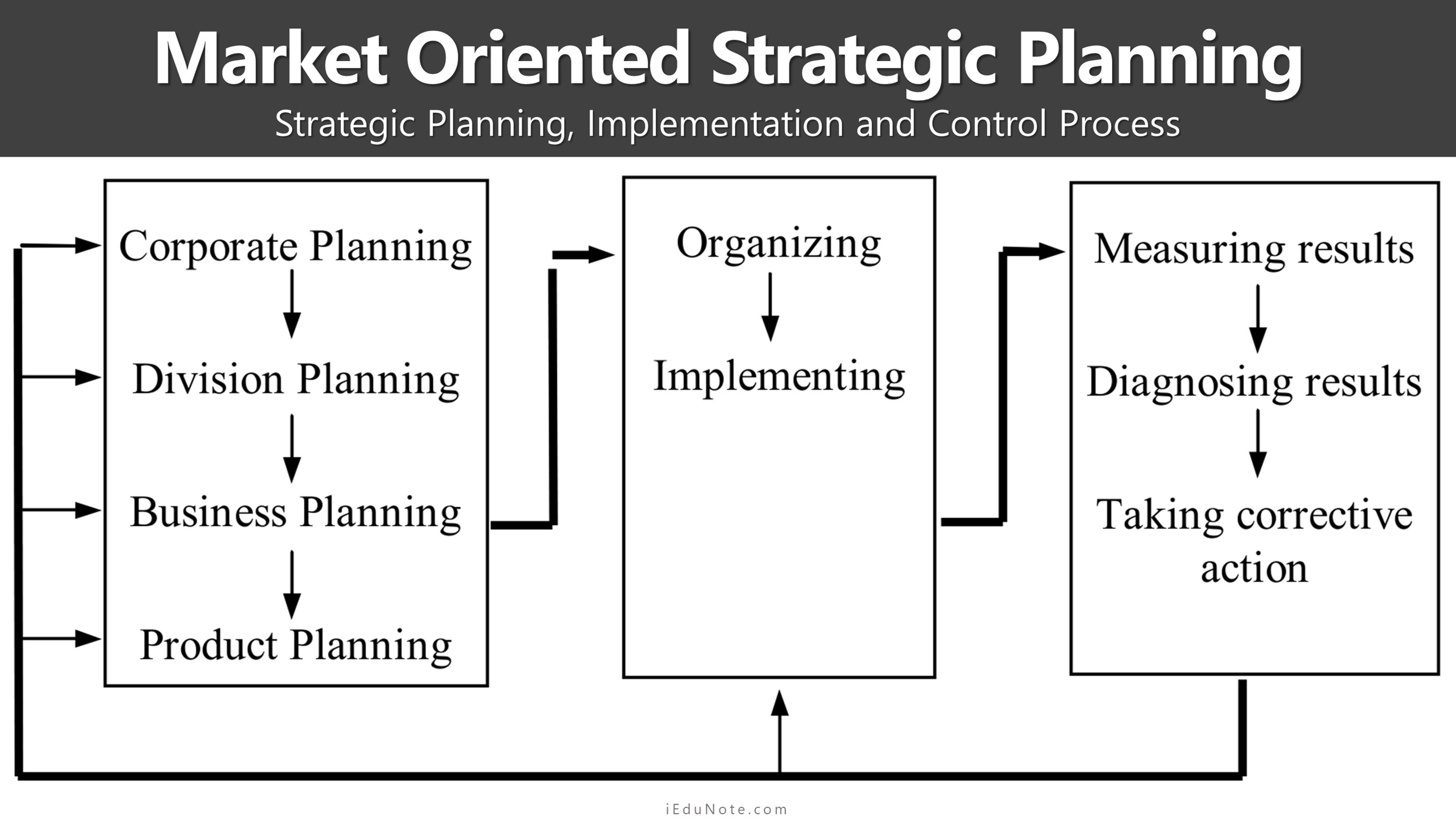A marketer must seek ways to balance his objectives, skills, resources, and the dynamic environment. Strategic planning helps him to achieve this. Therefore, strategic planning, implementation, and control knowledge are necessary for a marketer to survive in the changing environment.
Table of Contents
What is Market-Oriented Strategic Planning?
Market-Oriented Strategic Planning is the managerial process of developing and maintaining a viable fit between the organization’s objectives, skills, and resources and its changing market opportunities.
Strategic planning aims to shape and reshape the company’s businesses and products to yield target profits and growth. Strategic planning can also be described as a sequence of activities that lead to a grand design for business success.
It basically sets corporate missions and objectives, analyzes the performance of business units, identifies future opportunities, establishes a target “product” portfolio, and develops strategies for each business unit.
The focus of this definition is on a plan that integrates the activities of all departments within a firm. The idea is to rationalize the overall growth of business organizations rather than rely on individual departments’ proposals and accidents of nature.
Strategic planning is a formalized review process that can lead to higher profits and sales for the whole business organization.
When and Under What Circumstance Has this Concept Emerged?
It emerged originally in the US in the 1970s. The reasons for the emergence of the concept are, among others, the energy crisis, double-digit
inflation, economic stagnation, Japanese competitive victories, and deregulation of key industries. All of the above had hit the US industry badly, which gave impetus for the development of this concept.
During that period, companies realized that they could rely no more on conventional planning to schedule production and project sales and profit; rather, it should be replaced by strategic planning to ensure the organization’s existence in the face of odds.
Areas Where Actions Are Taken in Strategic Planning
Three key areas receive attention in strategic planning, i.e., actions are taken in these areas. They are discussed below.
In the beginning, it is acknowledged that each of the company’s businesses is different, and as a result, their profit potentials are different as well. Keeping this in mind, management allocates resources to different businesses differently based on the business’s profit potential in question.
Second, each business is assessed accurately by considering the market’s growth rate and its position and fit in that particular market by using current and anticipated sales and profits.
The final area receiving attention is the formulation of strategy. If a company has more than one business, it must develop an individual game plan for its businesses.
The purpose of developing such a plan is to achieve the long-run objectives of the company. The game plans are prepared based on its position in the industry, its objectives, opportunities, skills, and resources.
It implies that companies doing the same business may have separate game plans depending on their position, objectives, opportunities, skills, and resources.
In the strategic planning process, marketing plays the most vital role. If you want to understand marketing management in its true perspective, you must have a clear comprehension of strategic planning. You should know that the top management at the headquarters basically prepares the corporate strategic plan.
It takes into account the whole organization; we mean all of the businesses are considered. The corporate strategic plan is prepared, showing guidelines for each of the businesses so that the company can ensure a profitable future.
Again, if a company has several divisions, each division prepares a divisional strategic plan by showing resource allocation to the business units under the division.
Each business unit also prepares a business unit strategic plan to make the unit a profitable one. Finally, each product level’s marketing plan is prepared to show how sales will be achieved, and profit will be made from each product class.
The strategic planning, implementation, and control process can be shown in the following figure.


